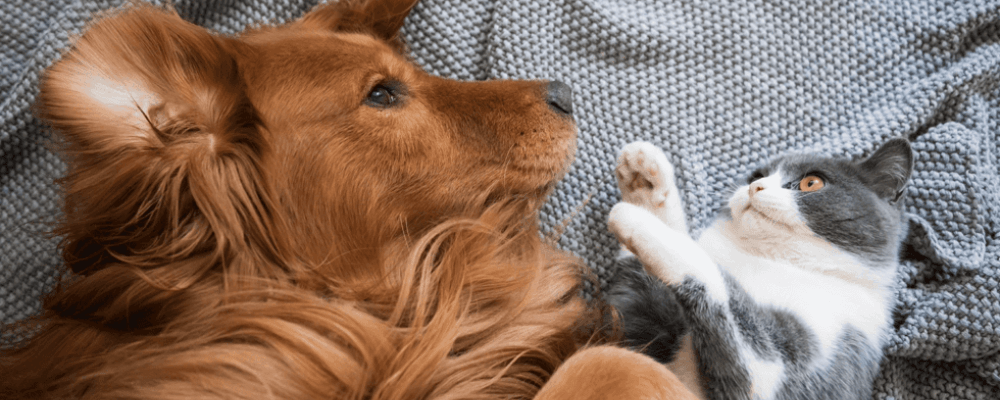Why do dogs chase their tails, what is “allogrooming,” and how many whiskers do cats have? Read on to find out!
1. Dogs chase their tails for many reasons — boredom, curiosity, exercise, and even fleas! Be sure to talk to a veterinarian if this habit becomes excessive, as there could be an underlying issue.
2. Kittens are born with blue eyes due to a lack of melanin, which is responsible for pigmentation. Their eye color starts to change at around 4 weeks old when their body begins to produce more melanin.
3. Dogs have up to 300 million olfactory receptors, while humans only have about 6 million.
4. The ritual of cats grooming other cats is called allogrooming. It’s a caretaking behavior in which animals use their mouth and hands to groom other members of their group. It’s also often exhibited in other species too, like primates and birds.
5. It’s no surprise that pets are great at relieving stress in humans. But what may be surprising is that just 15 minutes of petting your pup can lower your blood pressure!
6. White cats — especially those with blue eyes — are often deaf either in one or both ears.
7. Chow Chows, known for their blue-black tongues, are actually born with pink tongues! They start to change color a couple of months after birth.
8. Cats have 18 toes — five on each front paw and four on each back paw. If they have extra toes, they’re called polydactyl.
9. Yawning is contagious — not just for humans, but for dogs too!
10. Most cats have a total of 24 whiskers, with 12 on each side arranged in four rows. The number and placement of dog whiskers aren’t so predictable and vary between individuals.
11. Dogs instinctively curl up into a ball when they sleep. This innate habit is meant to keep them warm and protect their vital organs from predators.
12. Those little bumps on a cat’s tongue are called papillae. They contain tiny hooks, which gives the tongue the feeling of sandpaper.
Want to learn more? Check out 15 more fun facts about cats and dogs!



